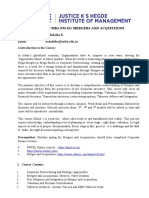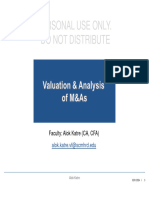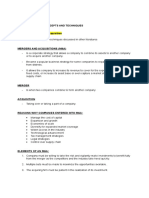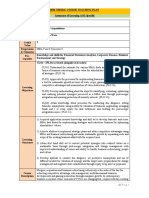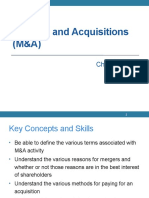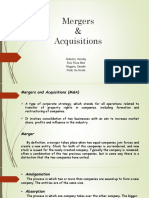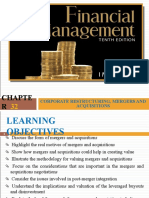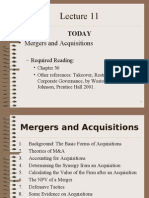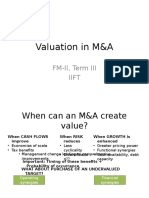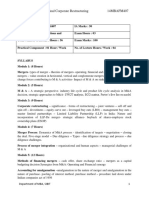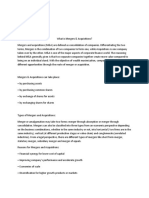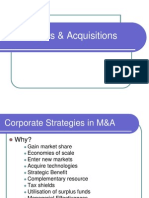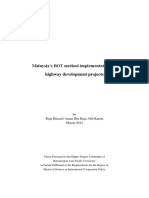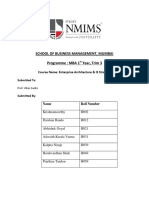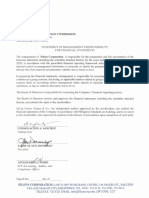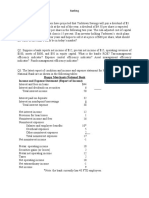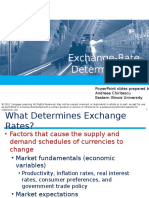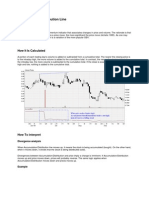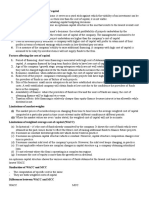0% found this document useful (0 votes)
18 views4 pagesVMA Notes
The document discusses the fundamentals of mergers and acquisitions (M&A), including market trends, types of buyers, and strategic rationales for M&A. It outlines the arithmetic of M&A, emphasizing the importance of valuation, synergy, and merger arbitrage, while also highlighting common challenges and failures in M&A transactions. Additionally, it provides insights into the Indian M&A landscape, showcasing notable deals and the impact of regulatory changes.
Uploaded by
devinaCopyright
© © All Rights Reserved
We take content rights seriously. If you suspect this is your content, claim it here.
Available Formats
Download as DOCX, PDF, TXT or read online on Scribd
0% found this document useful (0 votes)
18 views4 pagesVMA Notes
The document discusses the fundamentals of mergers and acquisitions (M&A), including market trends, types of buyers, and strategic rationales for M&A. It outlines the arithmetic of M&A, emphasizing the importance of valuation, synergy, and merger arbitrage, while also highlighting common challenges and failures in M&A transactions. Additionally, it provides insights into the Indian M&A landscape, showcasing notable deals and the impact of regulatory changes.
Uploaded by
devinaCopyright
© © All Rights Reserved
We take content rights seriously. If you suspect this is your content, claim it here.
Available Formats
Download as DOCX, PDF, TXT or read online on Scribd
/ 4





